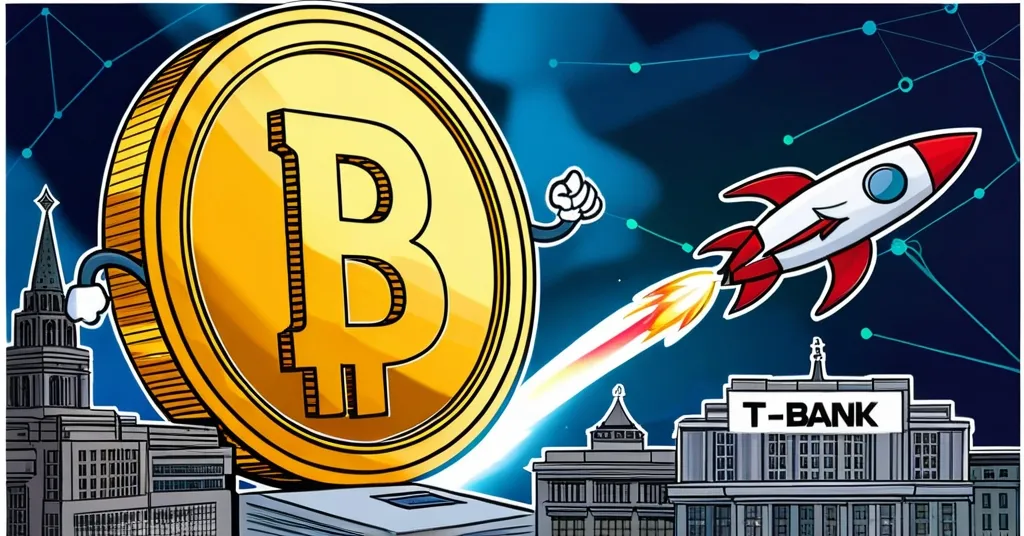Russia’s Digital Ruble Faces Bank Backlash as T-Bank Explores Tokenization

Russia’s Digital Ruble Faces Banking Opposition While T-Bank Explores Tokenization
“Banks might no longer be needed in Russia once the digital ruble launches,” warns Anatoly Aksakov, head of the State Duma Committee on Financial Markets. As the Bank of Russia (BoR) gears up to launch its Central Bank Digital Currency (CBDC), known as the digital ruble, in the first half of next year, Russian banks are pushing back, fearful of high costs and existential threats. Meanwhile, T-Bank, Russia’s leading neo-bank, is boldly venturing into tokenized investments with the sanctioned firm Atomyze, signaling a dual-track approach to financial innovation amidst geopolitical challenges.
- BoR to launch digital ruble next year
- Russian banks oppose due to high costs
- T-Bank to launch tokenized investments
The Digital Ruble: Russia’s Ambitious Plan
The BoR’s strategy for the digital ruble is to make it the cheapest payment method in Russia. A CBDC is a digital currency issued by a central bank, representing a new form of money that aims to leverage the benefits of blockchain technology while maintaining state control over monetary policy. The digital ruble will offer permanently free transfers between individuals and a one-year grace period where transactions between consumers and businesses, or between businesses themselves, will also be free. After this period, fees will be introduced, with a portion redistributed to payment platform operators to encourage adoption and use.
The push for the digital ruble comes amidst a backdrop of international sanctions and exclusion from SWIFT, highlighting Russia’s desire to enhance its monetary control and facilitate cross-border transactions. The BoR plans to ensure the digital ruble’s issuance remains inflation neutral, restructuring the money supply in its favor without impacting banks’ balance sheets.
Banking Opposition: A Costly Threat
Despite the incentives, Russian banks are fiercely opposing the digital ruble. Anatoly Kozlachkov, head of the Association of Russian Banks, has criticized the high implementation costs, which could reach up to 100 million rubles ($1 million) per bank. “The proportions of costs for the introduction of the digital ruble should be adjusted – or approaches should be differentiated, taking into account the specifics of the players,” Kozlachkov stated. The banks fear not only the financial burden but also the risks of disintermediation (removing the need for banks as middlemen in transactions) and liquidity outflow, which could threaten their very existence.
The proportions of costs for the introduction of the digital ruble should be adjusted – or approaches should be differentiated, taking into account the specifics of the players. – Anatoly Kozlachkov, head of the Association of Russian Banks
While the banks’ fears might seem overblown, the potential for the digital ruble to disrupt traditional banking is real. Is it the death knell for banks, or are they just freaking out over nothing? Only time will tell, but the BoR’s efforts to restructure the money supply in favor of the CBDC without additional currency issuance might ease some of these concerns.
T-Bank’s Bold Move: Into Tokenization
T-Bank, formerly known as Tinkoff Bank and led by its exiled founder Oleg Tinkov, is not sitting idly by. The bank is preparing to launch tokenized investment services next year, in collaboration with Atomyze, a local tokenization firm sanctioned by the US. T-Bank plans to issue tokens on a private blockchain network, representing various assets such as loan products, financial obligations of small and medium-sized enterprises (SMEs), and even art tokens. These tokens will utilize smart contracts to automate transactions, showcasing a bold move into innovative financial products despite geopolitical challenges.
Tokenization is the process of converting rights to an asset into a digital token on a blockchain. This allows for the creation of digital financial assets (DFAs) that can be traded more efficiently and transparently. T-Bank’s choice to work with Atomyze, despite the sanctions, reflects the resilience and adaptability of Russia’s financial sector in the face of adversity.
The Bigger Picture: Implications for Crypto
The unfolding saga of Russia’s digital ruble and T-Bank’s tokenization efforts paints a complex picture of innovation clashing with traditional financial structures. While the digital ruble aims to enhance Russia’s monetary control and facilitate cross-border transactions, it also poses significant risks to the traditional banking sector. The potential for disintermediation remains a looming threat, but there are also benefits to consider, such as increased efficiency and reduced costs for consumers and businesses.
On the other hand, T-Bank’s foray into tokenized investments highlights the dual-track approach of embracing blockchain technology while navigating geopolitical tensions. The global crypto community watches keenly, understanding that the outcomes could have far-reaching implications for the future of digital currencies and decentralized finance.
Future Outlook
As 2024 approaches, key milestones to watch include the digital ruble’s launch and its impact on Russia’s economy, the banks’ response to its implementation, and T-Bank’s progress with tokenized investment services. The BoR’s plans to make the digital ruble platform interoperable with other CBDC platforms, potentially starting with China, could further shape the global landscape of digital currencies.
Key Questions and Takeaways
What is the Bank of Russia’s strategy for promoting the adoption of the digital ruble?
The BoR aims to make the digital ruble the cheapest payment method by offering free transfers between individuals and a one-year grace period of zero fees for other transactions.
Why are Russian banks opposing the digital ruble?
Russian banks are concerned about high implementation costs and the potential for disintermediation and liquidity outflow, which could threaten their business.
What is T-Bank planning to do with tokenized investment services?
T-Bank, in collaboration with Atomyze, is preparing to launch tokenized investment services, including loan products, financial obligations of SMEs, and art tokens, on a private blockchain network.
How has the use of digital payments in Russia changed over recent years?
Digital payments in Russia have increased significantly, from 38% in Q1 2017 to 63% in Q1 2023.
What are the potential implications of the digital ruble for the traditional banking sector in Russia?
The digital ruble could lead to disintermediation and liquidity outflow, potentially making traditional banks obsolete if not managed carefully.



